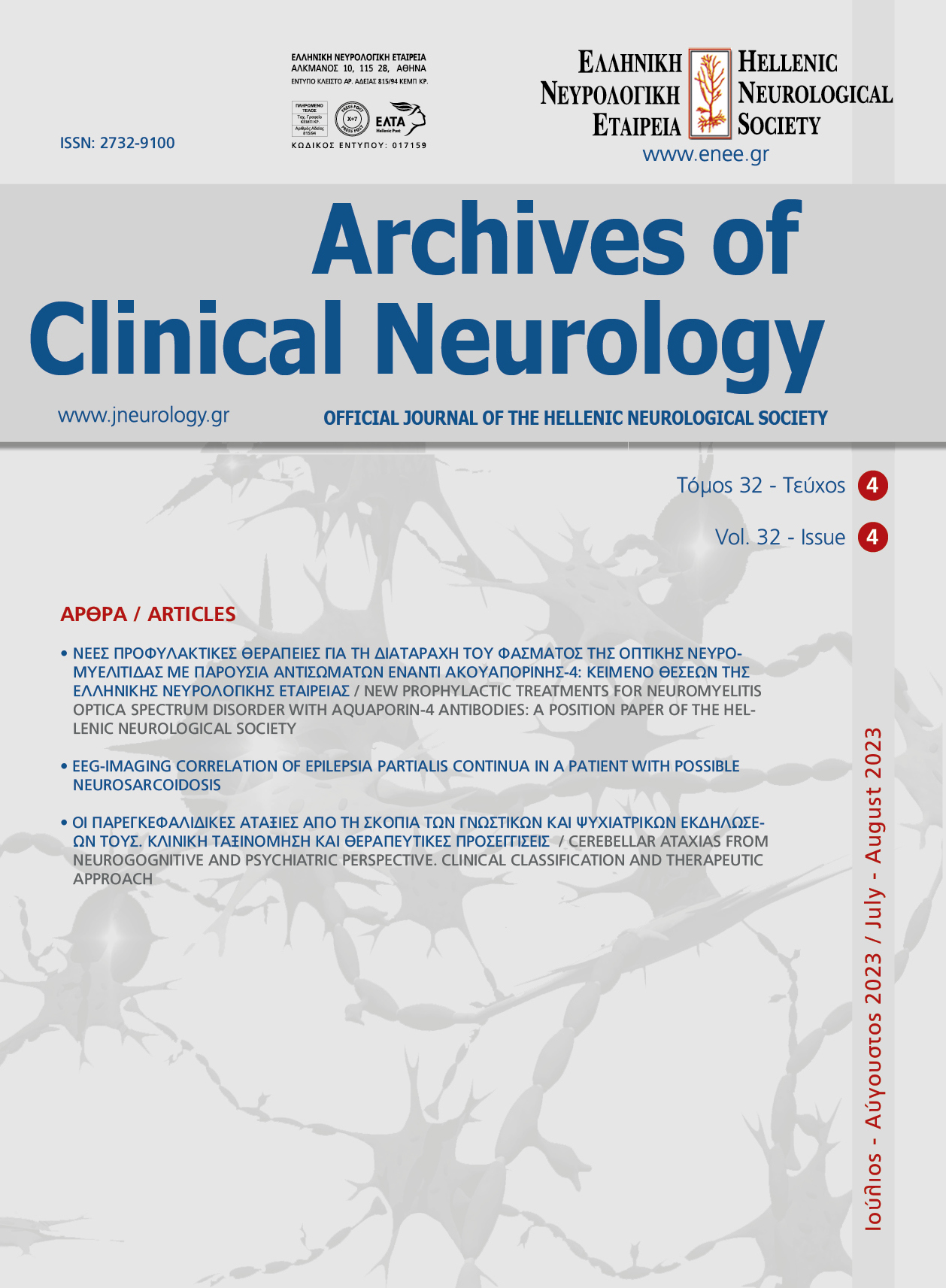CEREBELLAR ATAXIAS FROM NEUROGOGNITIVE AND PSYCHIATRIC PERSPECTIVE. CLINICAL CLASSIFICATION AND THERAPEUTIC APPROACH
Keywords:
cerebellar ataxias, depression, cognitive disordersAbstract
Cognitive and affective disorders have been increasingly diagnosed in neurodegenerative diseases, like
cerebellar ataxias, often resulting in poor quality of life, since they share a bilateral relationship of mutual
aggravation. Comorbid depression in patients with cerebellar ataxias might be a response to progressive
motor disability, or represent the outcome of a common, underlying pathophysiological mechanism. In
patients with SCA3 (Spinocerebellar Ataxia type 3), depressive symptoms are mainly linked with physical
impairment due to disease progression, while in other types of SCA, depression might be considered as
a pathophysiological part of the neurodegenerative process, regardless of the ataxic deterioration rate.
In ARCA – 1 (Autosomal Recessive Cerebellar Ataxia type-1), non-motor demonstrations of cerebellar pathology do not include clinical significant depression, but rather cognitive deficits. Administration of
citalopram has delivered significant beneficial effects on the motor phenotype, in animal models of SCA3.
Buspirone treatment showed symptomatic improvement in patients with OPCA (olivopontocerebellar
atrophy), as well as in patients with Cortical Cerebellar Atrophy and in patients with SCA3. Therapeutic
results have been obtained with L-5-HTP (5-hydroxy-L-tryptophan), a precursor of serotonin, in several
conditions presenting cerebellar ataxia, even though OPCA has been proven treatment resistant to this
therapeutic approach. High dose piracetam infusion has been proven effective in reducing the disability
of ADCA (Autosomal Dominant Cerebellar Ataxia) patients by improving their gait ataxia. Donepezil
might have therapeutic properties in ameliorating symptoms in CCAS (Cerebellar Cognitive Affective
Syndrome), while memantine has demonstrated therapeutic effects in patients with Friedreich’s ataxia and
ARCA (as far as visual and oculomotor deficits are concerned) and FXTAS [Fragile X-Associated Tremor/
Ataxia Syndromes] (regarding verbal memory impairment). Promising results have also been reported by
memantine administration in animal models of SCA1. Improvement in neuropsychiatric symptoms in FTXTA
has been achieved through combined administration of memantine and venlafaxine and the same applies
for donepezil-venlafaxine concomitant administration. Rivastigmin had no therapeutic contribution in the
ataxic gait of SCA3 patients who only demonstrated coordination abilities improvement. Cognitive and
affective disorders, might be overlapped or even clinically surmounted by motor symptoms of cerebellar
ataxias, and therefore should receive the appropriate attention in the holistic therapeutic approach of
the multifaceted spectrum of cerebellar pathology. Clinical doctors should aim at the improvement of
patient’s quality of life, taking in consideration the reciprocal relationship of mutual deterioration that
governs the course and prognosis of ataxic manifestations as well as concomitant neurocognitive deficits
and emotional disorders.


